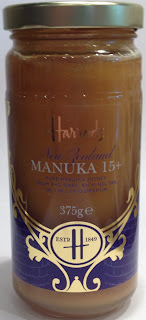Introduction
Introduction
In his monumental work, On Food and Cooking, Harold McGee writes, "[t]hough most honey is made from a mixture of nectars from different flowers, some 300 different 'monofloral' honeys are produced in the world . . ." Harold McGee, On Food and Cooking, page 663-64, Scribners, 2004. In 2012 I began a quest to try a few of these monofloral honeys. After a while I began looking for a book that would guide me in my quest and found nothing that met my demands. The reason for this was that I looked too soon. As far as I can tell, only in the summer of 2013 were two popular books published which cover this topic, The Honey Connoisseur by Marina Marchese and Ken Flottum and Taste of Honey by Marie Simmons. Not having had these books available, I took to the Internet -- that repository of all truth -- and found helpful information from the National Honey Board. On its website the Board provides a catalog of honey varietals that gives a good description of each floral source and sometimes a description of the honey's flavor. There is also a helpful brochure on varietals here. So, why isn't that the end of the story and the end of this blog?
One need only try a few of the many clover honeys available to discern that clover honey from one region tastes a bit different from clover honey from another region. There are regional differences in honey that make a noticeable difference. The Board's information is too general to take this fact into account. In addition, the Board doesn't review the honey of a particular supplier, as I intend to do. As for the books, they limit their discussion to 30 and 40 varietals, respectively, and I intend to go beyond that number. Another reason for soldiering on in this quixotic quest is that the Board's list is incomplete in some respects, as it readily admits. I suggest you consult both the Board and this blog when learning about a particular honey.
Accordingly, for the benefit of all mankind, I reluctantly take up the task of eating my way through as many honey varieties as possible and sharing some information about each variety. I hope you find something useful in what I write and return regularly as I slowly build this database. You see, I intend not to gain any weight in doing this project, so it will take years to complete. Spoons at the ready? Get set! Go!
A Note on Color
No, I am not color blind. I too can see that amber-colored honey is not white. Then why would I call any honey white? In the United States the US Government has classified honeys in seven categories: (1) water white, (2) extra white, (3) white, (4) extra light amber, (5) light amber, (6) amber and (7) dark amber. I have used this classification system because it appears on most labels. I might have used the Pfund honey grading system (which is in millimeters), but I don't want to pay for the equipment to take those measurements and you wouldn't care about those measurements if I had.



